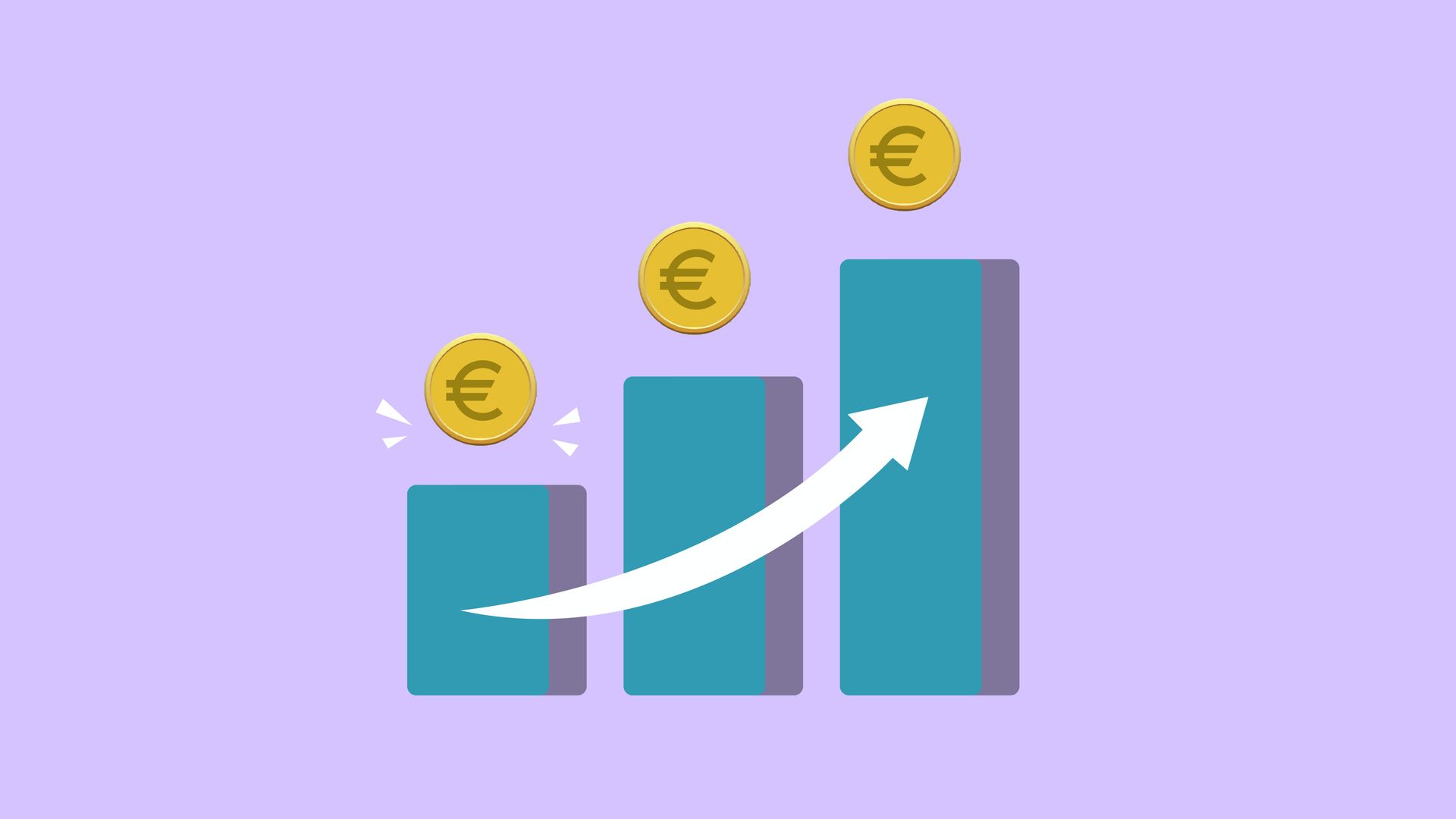Blog
Blog

By Steve Laborda
•
28 Mar, 2023
Price increases are among the most impactful activities for salespeople but, simultaneously, one of the most challenging and unpopular, especially in times of cost increases, inflation, and uncertainty. The following challenges for price increases are widespread: Customer resistance: Customers may be reluctant to pay higher prices, leading to decreased demand or even losing customers. Competition: Other businesses may not need to increase prices or drive another strategy, making it challenging to remain competitive. Market conditions: Economic or market conditions make it difficult to raise prices, such as a recession or saturation of the market. Perception: if your customer perceives the price increase as unreasonable or unfair, you might negatively impact your customer's perception of your company and its products. Communication: Effectively communicating the reason for the price increase to customers is vital in minimizing resistance and maintaining their trust. To better understand what the most relevant factors are, I asked my network recently where the most significant challenge lies: Understanding why you need to make the price increase Lack of justification/reasons Concern about the relationship More than 50% of respondents said that concern for the relationship was their biggest challenge in negotiating. The second biggest challenge (nearly 1/3) is that salespeople do not have the right package to justify the price increases. What can you do to improve the situation? As a sales leader, ensure your sales teams have the right skills and competencies to make the most impact in every negotiation. Regarding the need for more justification, I am always surprised how many companies leave their sales teams in the dark, alone on this issue. In many companies, salespeople must gather information, data, and trends to adequately justify price increases when negotiating with customers. This extra workload leads to frustration, waste of time, and even inadequate justifications for price increases. Sometimes salespeople are in front of the customer, using inappropriate arguments on cost increases that lead to a challenging situation during the negotiation process. Ultimately, your sales teams leave money on the table during the negotiations. A key recommendation is to break down the silos between sales and marketing to jointly develop, review and rehearse the ammunition package for and with your sales teams. A much more complicated issue is the concern about the relationship and subsequent loss of the customer and associated business. Many salespeople are concerned about damaging the relationship with their customers that lasts for years over many years. A damaged relationship can lead to a loss of business, making it difficult for them to achieve their goals. As a sales leader, you ensure that your sales teams have enough confidence to handle the challenges of price negotiations since many purchasers are using the argument of damaging the relationship to avoid the price increase. Therefore a key recommendation is to ensure that your teams clearly understand that they may also lose some business when negotiating price increases and that it is ok to do so. I have seen the importance of repeatedly communicating this message to your sales teams. During the negotiation process, your customers may challenge your relationship. However, be as transparent as possible to maintain trust and credibility. As a sales leader, emphasize your leadership on coaching and supporting your team to improve your sales team's ability and confidence in price increases. Another big challenge many customers face is when is the right time for a price increase. Imagine you are a pricing manager, and your management asks you to increase prices. You've adjusted prices several times in recent months due to raw material, freight, energy costs, and possibly other cost increases. Now you are approaching the annual negotiations at the beginning of next year and are wondering whether you should push through another price increase, e.g., due to increased energy costs. At the same time, you are still determining how substantial the cost increases will be. Of course, we have yet to find a simple and straightforward answer. We have identified some key aspects to consider when assessing the situation and deciding whether to adjust prices now or early next year: What is your position in the market? Are you a leader or a follower? How urgent is this price adjustment? Is your profitability level so low that you urgently need price increases? How quickly can your retail organization implement the price increases? Answering these questions will help you decide when to make the price adjustments. As a pricing manager, ensure that you have the right insights on the market and competition and a clear strategy to help guide your sales teams through the pricing increase that makes the relevant impact and maintains the right level of customer relationship. Find attached an infographic to summarize the key steps: HERE It would be great to hear about your experience with price increases! #valuebizbooster #b2b #pricing #sales #salesleadership

By Steve Laborda
•
24 Aug, 2020
I would like to share five myths that I met along my journey in commercial excellence. In the coming article, I am going to share some of the myths I encountered around commercial excellence and some strange expectations that top management has or might have about running commercial excellence. Obviously, this isn’t an exhaustive list, I am sure you have your own ones. So please share those! You will find for each of the myths some challenging questions to reflect on as well as some insights on how to demystify those challenges ❓ MYTH #1: The CRM will solve all your sales effectiveness challenges. 😤 I have heard many times that by implementing a CRM tool, like a San Gral it will solve all the challenges you have with your sales and marketing organization. 💡 The answer is ultimately NO a CRM tool will not solve everything, you need to have your basics in place. Your commercial strategy, basics such as customer segmentation strategies, business models, and processes need to be in place. ❓ MYTH #2: Few trainings and your sales teams are ready to sell value-based 😤 I have met so many management teams who are wondering their value selling is not picking up even though few trainings have been provided 💡 Yes trainings are needed for the sales teams, BUT yes there is a but: it is not enough! Even if you provide on top of your training a powerful tool, sales teams need more than that: they need confidence and understand WIIFM to sell value-based. The best practice I have seen is by combining training, tools with some effective engagement steps such as getting your team to understand the value of doing value-based selling and support them in their daily challenges through on the job coaching journey. ❓ MYTH #3: Having a customer segmentation is good enough and the commercial teams know exactly what to do! 😤 Have you experienced the same: you get told or introduced as a sales rep here is the customer segmentation and please act accordingly? You ask yourself: so what, customer segmentation stays a piece of theory! 💡 Yes, customer segmentation is needed; they can be fact-, need- or behavior-based. Customer segmentation stays theoretical until you have translated it into some actionable strategies that provide clear guidance for sales teams to act towards the different customer segments. ❓ MYTH #4: Getting a commercial excellence setup and all our sales reps will be more efficient and all our customers will be happy! 😤 Do you know this situation: a freshly built team is labeled commercial excellence and now as of day #1 from top management through middle and management everybody expects that all issues related to commercial teams will be solved and at the same time all our customers will be happy? 💡 Yes, a commercial excellence initiative is needed, BUT consider as management that it takes time to build, change, and engage the ways of working to get access to the expected impacts. It does not mean that you can’t earn some quick wins too. As you will realize, the change in ways of working is taking time for your commercial teams, so you can expect that the impact and happiness improvement on your customers will take a bit longer. Further, do you want to have all customers to be happy? ❓ MYTH #5: Fill-up the top of your opportunity funnel to get many leads. 😤 Have you already experienced this: your manager pushes or even micromanage to get you filling up the pipeline with leads or you get useless “leads” out of a marketing campaign from your marketing peers? 💡 Indeed you will possibly manage many leads but are those relevant for your business and will they be leading to business or will you waste your time? Do not misunderstand me, yes a funnel and opportunity management is crucial but quality over quantity needs to be applied. How do you ensure that you focus on quality instead of quantity: the leads need to be well qualified. Do you have the right metrics in place to qualify your leads? How does an ideal lead/opportunity look like? Now that you had a read through those myths and some food for thoughts, what is your take-away or experiences around commercial excellence? Would be great if you can share those in your comments? #salesenablement #commercialexcellence #salestips #salesmanagement #marketingexcellence #CRM #valueselling #salesfunnel

By Steve Laborda
•
24 Apr, 2020
The challenges companies with possibly lower sales or low cash flow are even more relevant those days with the COVID-19. Hence the need to build a strong organization focusing on capturing value has become even more crucial and critical to ensuring companies to catch-up the gap created through the current situation. Many management and sales & marketing leaders know how difficult it is to build a successful organization around value-based selling and it is even more challenging to keep it up running. You might ask why is it like that? From the experience that I gathered the last 20 years, here the main roadblocks that slow-down typically value-based selling initiatives: Lack of confidence of the sales organization on how to approach their customers with this different approach from usual Too theoretical approach and not actionable enough: for the sales teams it is not clear where to start with. Too much focused on trainings and not on providing continuous support through coaching: the teams feel left alone after the trainings and not getting the support on a regular basis that they would need. How can you actually see that the value-based selling initiative that you have started a few years ago isn’t sticking? There are few signs that you can get from your organization that show that your initiative around value-selling is not as effective as you would have wished: The sales teams when you talk about value-based selling they do not know what you are talking about. Marketing is creating great ammunition packages for your sales teams, but nobody is using them Management is asking for RoI and you can nearly report any progress Does this sound familiar to you? Then keep reading, as it might give you some food for thought: What to do to get teams working successfully in value creation and capture at the same time? Consider that, even value-based selling is a cross-functional effort, the main part of the organization it is addressed to are salespeople. Just stating here the obvious, sales is typically busy running from one customer to another or Nowadays from one call to an other or possibly doing some firefighting to solve customer's issues. Hence salespeople do not have typically the time to sit down for long and work themselves through theoritical, complicated and cumbersome concepts. This means that the approach needs to be: Simple: the methodology should be based on the KISS approach, should be easily understandable and not feeling overwhelming for the sales organization Practical: the cases that you are working on need to be concrete, related to the job, and as tangible as possible. Step by Step: The methodology needs to be scalable, to build on the capabilities gradually over time and that means no Big Bang to ensure that the sales teams can digest the content and the approach

By Steve Laborda
•
22 Feb, 2020
Digitalization, as well as agile, are part of the popular buzz words currently to be "à la page", but what does it really mean and did you check that before going towards a digital transformation you have all your basics in place? Don’t forget, as Grady Booch said: „ A fool with a tool is still a fool “ If your organization is not well prepared, you are going to waste a lot of resources and money by starting the race into a digital transformation of your sales force. What do I mean with the basics? In the case of customer excellence transformation: customer segmentation, channel management, earning logics, pricing, S&M processes, and much more need to be in place and adopted by the organization before aiming to make a full-blown digital transformation. A few examples of basics as S&M processes that each B2B company should have in place: a clear customer segmentation that clearly defines the strategy and more essentially how the sales teams should behave with the different customers. building on the customer segmentation, it is key to have a clear channel strategy and management of it based on the customer segmentation to address customers or even regions that need to be served differently to ensure the right level of service and related cost-to-serve Let’s not forget about pricing the key lever to drive profitability. There is a clear need to have processes, guidelines, and R&Rs how prices are set, approved as well as discount rules in place before having all the digital change Overall I recommend having a critical review of the processes in place and those need before the digital transformation. Ideally, some processes won’t be needed so why trying to digitalize them? Your customer should be at the center of what you do! So whatever you want to digitalize think about what will the customer get from it? Get your customer satisfaction measured before, during and after the digital transformation to ensure that you are focusing on the right development areas. All studies show that if your organization, especially the sales teams, is happy, you will have happy customers. Happy customers mean loyal customers and loyal customers are ready to pay more. On top as you know to gain a customer back is 7 to 10 times more expensive than to retain him. So keeping your sales teams happy, aligned and not overloaded, will keep your customers happy and will keep you and your shareholders happy as well since you will get the right profitability, RoI and customer satisfaction. Obviously, the whole transformation should be supported by engagement management activities to ensure success within the implementation through a proper buy-in of your organization, top management, and your customers. To summarize: to get a successful digital transformation you need to take care of two aspects mainly: Keep your customers happy Focus on the basics first before moving ahead with a digital transformation Have a clear engagement management plan in place to support the transformation #digitaltransformation #CustomerExcellence #ReturnOnInverst #salesandmarketing #b2b

By Steve Laborda
•
11 Feb, 2020
Let me tell a little own story about the importance of insights and being a true expert: About 13 years ago, I took up a challenge as a technical marketing manager for APAC region just two years after my study, replacing a colleague that was going to retire. Before he left, about a few weeks after I started in that role, we went to Japan for a standard senior/junior handover at our main customers there. As you can imagine that early in my career, how I was feeling in general. But it became even more challenging. At one of the main customers, I got asked to make some technical presentations, which even though being stressed, I thought I would manage. But when I entered the room, I was shocked. It was not a meeting room, instead, it was an amphitheater with approximately 30 Japanese senior scientists. I suppose you can see how my heart dropped into my shoes. Indeed I was overwhelmed and not that confident and even though It went well, I would have wished to be better prepared: more insights and more knowledge. This would have given me some more confidence to run those experts through the presentations. Out of this experience, my key learnings were: Be well prepared Get to know as many insights as possible about the industry and customers If you cannot be prepared, be ready to improvise Why is it so important to be an expert? Upfront, it is not about you to shine in front of the customer, it is about being able to show that you are an expert, so you will build trust and credibility. Those two points are critical to building a good relationship with your customers and that will help you further to ask questions, to get access to customers’s challenges hence the possibility to do value selling. Imagine yourself in the situation where a sales guy meets you and has no understanding of the industry at all and doesn’t bring any insights, would you trust him or her? Of course not, because he or she hasn’t yet shown that he or she is trustworthy and credible as an expert. As already mentioned in previous blogs, preparation is key. As a salesperson, you should be aware of the key megatrends as well as possible industry-specific challenges. I would like to share a useful overview of the current megatrends, that will be a good starting point to collect targeted insights: https://www2.deloitte.com/content/dam/Deloitte/nl/Documents/public-sector/deloitte-nl-ps-megatrends-2ndedition.pdf This overview will be able to get prepared at a high level and can at least help you to initiate a discussion with your customers. A great point to then dig into the details based on the input from your customer. To summarize, getting access to industry-specific insights can help you to build trust and credibility that will give you access to value-based opportunities. I have developed a short checklist for value identification that might help you further: HERE If you have been reading the whole article and wondering « HOW AM I GOING TO DO THAT », and need some help. Give me a call and we can define together the way forward: HAVE A SHORT CALL WITH STEVE!

By Steve Laborda
•
24 Jan, 2020
In the last months, many articles talking about the possible recession to come in 2020 and some others saying that the slow-down is not coming. Here you can read some online articles related to the possibility of a recession either strong or mild from Bloomberg , Forbes , and UStoday . Anyway, is your company ready if it would be coming? I have seen this happening so many times, companies are starting to cut costs and jobs in anticipation of the hard time ahead, hoping to get them to overcome the crisis. I have been wondering is this really the right solution or more a drop of water on a hot stone? From my experience, cutting costs and jobs are actually only actions on a very short term to prepare for the slowdown, and these actions might give some relief to your bottom line for a few months or quarters. And then? I have seen that too many times after the recession when the economy picks up again, it does take so much time to get the sales activities as well as the customer excellence projects at full speed. That once the economy picks up again, as a company you are not capable of capturing all the value, profitability and growth that you could be getting. What is your approach when your company is getting under pressure due to the recession? So if you do not cut costs or jobs, what is the alternative to bring your company through a slow down? What if you would be building on sustainable value capture instead of destroying value with cost-cutting initiatives? The benefits of focusing on a value approach with your customer base would: make your business sustainable Strong and less incline to economical cycles Impact positively the customer experience Of course, this is not happening overnight and should not be taken just before the wave is going to hit. So a clear plan and preparation are required to build the capabilities of your organization. Here the quote that I like very much to explain the importance of preparation: The nicest thing about not planning is that failure comes as a complete surprise and is not preceded by a period of worry and depression John Preston Does your sales organization have the right mindset, skills, and competences to capture effectively and quickly value at the customer-end to ensure the company stays profitable independently of the economic situation? Are you satisfied with the performance of your sales teams when considering the value selling capabilities? If yes, you can stop to read here. If not, I encourage you to continue reading! What if, your sales teams would always look at not only creating value for the customers but also automatically consider to capture as much as a possible value for your company? I have been working many years in the sales and marketing arena in B2B industries to know that it requires a lot of effort and time to invest in people to develop their skills in value selling. The good thing about it: is that if you do it properly it delivers the right profitability. Most of the time, it is more than developing the skills of a group of sales reps. It is actually to get the right mindset and attitude for this new way of working and interacting with customers that do matter most. Indeed, you need to shift your farmers to hunters and from talker to listener. Obviously, easier said than done, but not impossible. As always, from a change/engagement perspective, I would focus first on the early adopters and big mass of the team to get them moving towards the new way of working. But please do not forget the so-called "back sheeps" because as you may know the bad news spread much faster than the good news, almost like forest fires. This means that even you might have a lot of success with the early adopters including some of the more undecided ones, if suddenly some failures show up, then those will lead to the undecided ones to move towards resistance. By the way, it is normal to have failures in a change process and even it is recommended. So, do not forget to talk about the learnings from the failures. To get these teams moving you need to build their understanding and confidence to make your change a success. How do you do that? To get their understanding, you need to focus on communication but not only. You need to make sure that they get the information, but also that they understand it. This can only be made sure if the communication is in both ways and in such a way that they understand What Is In For Them. To get your teams having enough confidence, you need to give them the right skills and at the same time, let them feel that failure is ok or even wished to happen. If you feel that this resonates a lot with the challenges that you have in your organization, and you are not sure how to take this further, l et´s get in touch and find out together on how we can get you ready !

By Steve Laborda
•
07 Jan, 2020
As already stated in previous blogs: " It is too expensive ", understanding the customers is a key part of the whole case development as you need to be able to make the case and the value proposition meaningful for our customers. How to gather the understanding is a blended approach between non-avoidable online research and direct customer interaction by asking questions and even more actively listening. The question here is doing this work for all the cultures across the globe: As you might guess, of course, it does not work the same way for all the culture around the globe, which means obviously that you need to be well prepared and well understand how to interact with your customer. One key aspect, for instance, is to well understand the meaning of « Silence » in various cultures or how positive is overall culture to better assess the willingness of your customers. But many more parameters are relevant when considering cultural aspects in customer interactions. Let´s focus on three parameters that might have a major impact on your interaction with your customers when meeting those cultures. The key here is obviously to accommodate the culture that you are in and the culture that your customer is in order to communicate in the most meaningful way to get the most successful outcome. https://www.hofstede-insights.com

By Steve Laborda
•
23 Dec, 2019
As a marketer, I am sure you have heard these words quite often. In manufacturing industries, especially in the chemical industry, the business is led by sales and marketing is more seen as a support function. In the past, that might have been a viable setup, as the buyer journey was very liner in time, sales were mainly interacting with the customers, making the deals and getting the rewards, on the other side marketing was more to provide the marketing and communication material. Nowadays, as the buyer´s journey is increasingly getting digital, between 50 to 70% [1], decisions are made much earlier and online, hence the customer calls when the decision has already been taken. How do we ensure that the customers do get the right information? Based on recent work research from Gartner [2], 50% of the buyers surveyed (n = 966) found the content too confusing and on average the buyers used 4 to 5 channels. Considering those findings, it does make it clear that an omnichannel experience is required; meaning combining the different channels to reach the customer: direct contact, online interactions, website, e-commerce platforms. Those facts show how the role of marketing is getting even more important than in the past. Marketing is the part of the organization to develop such omnichannel strategies and content to ensure that the customers are taking the right decision when going through their online buying process. Key obviously is that the message across various channels including direct interactions with the customers through sales is coherent. Since the importance of marketing in this new environment raising and still physical customer interactions by sales are still needed in many places. At the end of the day, it is all about creating and capturing value, demonstrating differentiation through various offline and online channels. Hence, the alignment between sales and marketing is even more than ever required. [1] CEB 2018, B2B buying survey, [2] Gartner 2019, Sales B2B buyer survey

